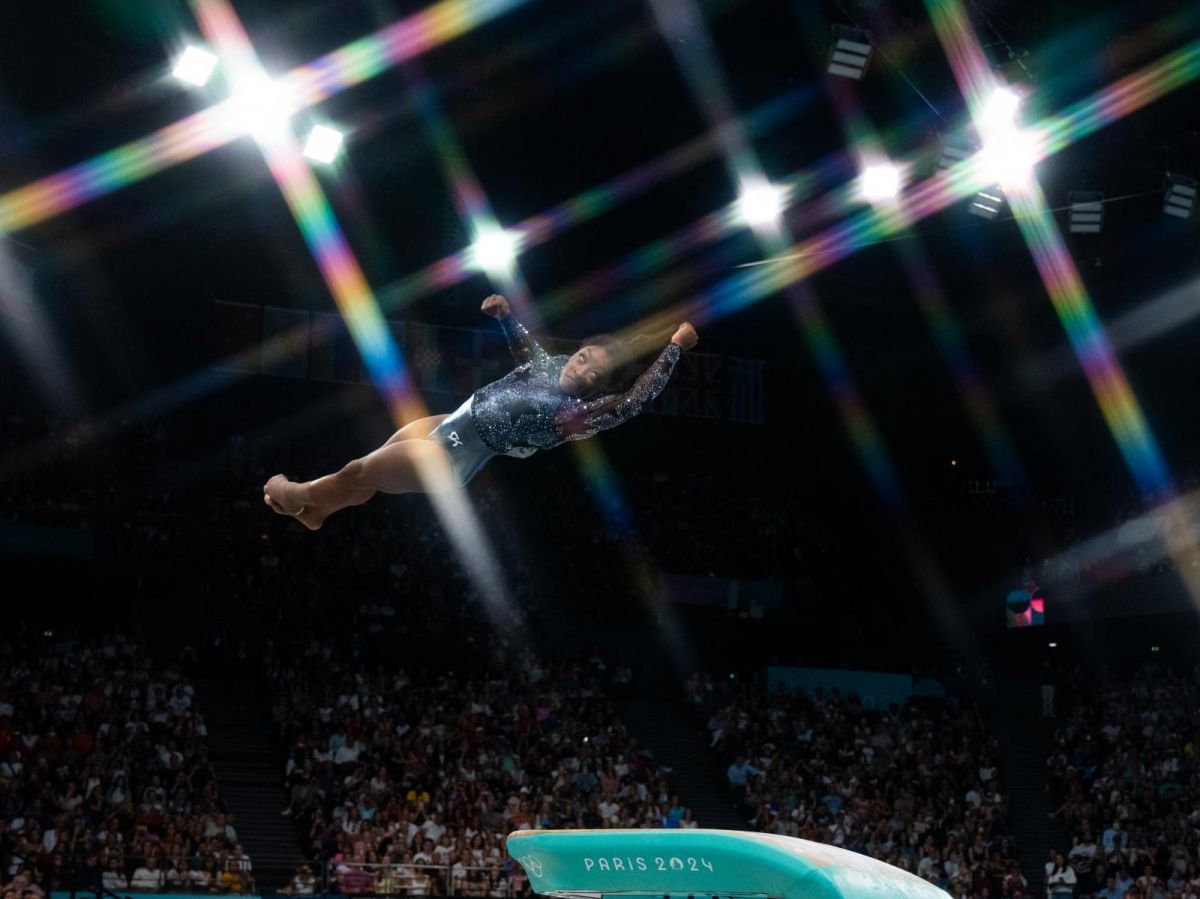1.42 meters: that's the height of American Simone Biles, queen of artistic gymnastics, while American women are on average 1.62 meters tall. Her main competitor, Brazilian Rebeca Andrade, measures 1.55 meters on the height chart. As for the male gymnasts who won medals at the Paris Games, they are barely taller than 1.70 meters... Does practicing this sport at a high level during childhood prevent growth? This is the fear of many parents and young practitioners. "The height of gymnasts is a common concern among parents, and even a reason for consultation.", confirms Stéphanie Nguyen Boussuge, pediatrician and sports physician, referent of the gymnastics center at INSEP (National Institute of Sport, Expertise and Performance). She often ends up reassuring her patients, while carrying out tests if necessary to assess the child's growth. The small size of gymnasts is rather explained by a natural aptitude for this sport, to which can be added the deleterious effects of high level on a growing body.
Physiognomic predispositions
Gymnasts are shorter than average before they even start at the top level and have shorter parents, reports a literature review carried out in 2013 by the scientific committee of the International Gymnastics Federation (FIG). While they do experience puberty later than average, this remains within the variability observed in the general population. Their adult height also does not seem to be affected by high-level gymnastics, the scientists conclude. On the contrary, these athletes are selected from childhood by coaches for their small size and late puberty (at 11 or 12 years old, some children have already entered this period, and this is the age when young athletes can be selected to enter the pole, a training structure approved by the Ministry of Sports). "Gymnasts are small because they have a physiological predisposition to the sport. The smaller and lighter you are, the better you spin in space.", summarizes Véronique Bricout, a researcher at Inserm in physical exercise physiology. Just like basketball players or swimmers have an easier time being taller.
But be careful: FIG scientists still point to a lack of long-term data. Above all, the studies (which focused on biological variables) did not take into account other variables affecting growth, such as training volume or the gymnasts' diet.
Aesthetic sports are particularly risky
It is precisely these elements that can have an impact on the growth of young gymnasts, more than gymnastics itself. “Practicing high-level gymnastics can lead to delayed height and weight gain [in height and weight, editor's note], but like any sport practiced intensively during a period of growth, with a deficit of energy intake compared to expenditure", explains Stéphanie Nguyen Boussuge.
According to a report from the Academy of Medicine dating from 2018 and dedicated to female athletes, practicing sports presents health risks from 20 hours of training per week, especially in aesthetic sports where appearance and weight play an important role. In gymnastics, girls compete in low-cut leotards, revealing their curves. Synchronized swimming and dance are also affected, as are endurance or weight-class sports.
Athletes' calorie intake must be sufficient to cover both their biological needs—such as growth—and their energy expenditure. If, voluntarily or not, they do not adapt their diet to their needs, their body will "pause" certain functions. This can have numerous consequences, such as delayed puberty or impaired bone health—symptoms referenced by the International Olympic Committee. This is why, "More than just height, we monitor the gymnasts' good acquisition of bone mass.", explains Stéphanie Nguyen Boussuge. "It's about avoiding osteopenia, a decrease in bone mineral density that can cause stress fractures, for example.", continues the pediatrician from INSEP, who assures that this type of pathology remains rare among gymnasts. She also pays particular attention to the signs of eating disorders.
A delay often caught up
Gymnastics is particularly at risk because it is practiced at a very young age, starting at the age of 6 in competition. However, despite lacking scientific data, boys appear to be less at risk because their peak training occurs towards the end of adolescence, later than for girls. This is despite the fact that more and more women are continuing at a high level after the age of 20.
This combination of factors, associated with the stress of practice and competition, only serves to accentuate the gymnasts' genetic predispositions. The growth and puberty delays of adolescent girls usually end up correcting themselves, but later than in the general population, according to doctors. "There are rare cases where significant trauma to the growth plate, resulting from falls, can impair bone growth. But this is not specific to gymnastics.", however qualifies Stéphanie Nguyen Boussuge.
Vigilance by those around them, particularly regarding eating disorders that are difficult to detect, as well as comprehensive medical monitoring are essential to the good health of athletes, the doctor insists. Changes in sport and mentalities could also contribute to this. "There has been a change in the morphology of gymnasts over the past ten years. Acrobatics have become increasingly technical, and they therefore need more muscular power to land better.", notes Véronique Bricout. While small stature remains a common characteristic of all gymnasts, more muscular and therefore heavier builds are making their way onto the podiums. We are therefore far from the clichés conveyed by the Olympic champions of the 1980s such as the icon Nadia Comăneci… Who grew about ten centimeters in the years following his Olympic victory at 14.
By Anna Lippert

